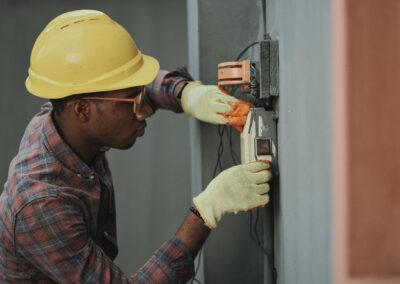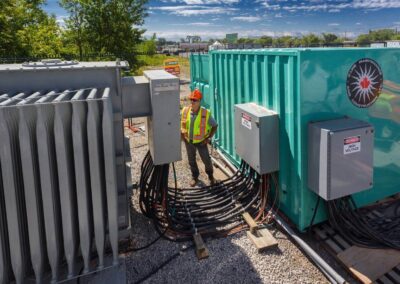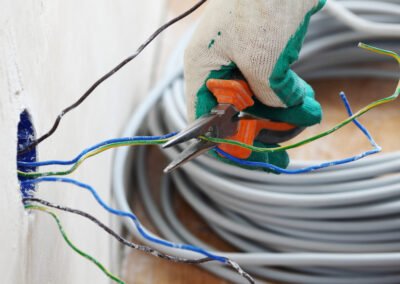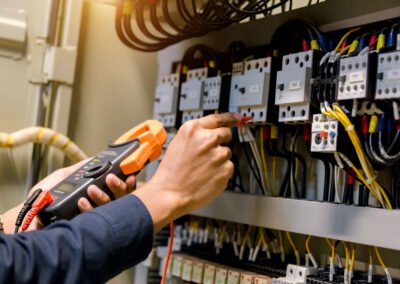Mobile Commercial Wiring, Brampton
Though electrical wiring in a residential facility is a fairly straightforward procedure, wiring for a commercial property is usually more complex, and requires the expertise of a skilled and knowledgeable electrician.
Request InformationSchedule Service
Mobile Commercial Wiring, Brampton
A certified electrical contractor’s skill is needed for electrical wiring in both residential and commercial premises, since it may be a complicated operation. This is crucial because it assures compliance to the Electrical Safety Authority’s (ESA) electrical regulations and safeguards the security of the building and all of its occupants. For a skilled electrician, electrical wiring may often be simple; but, wiring a commercial building might be significantly more complex than wiring a home. Electrical wiring is set up in commercial buildings to support any machinery or heavy equipment that will be operated there.
The three main methods for electrical wiring in commercial buildings are raceways and conductors, busways and cable assemblies.
Raceways and Conductors
Raceways and conductors are among the most typical forms of commercial electrical wiring. Raceways and conductors are frequently used in conjunction with a conduit or tube that contains numerous insulated phases as well as a conductor for equipment grounding. The actual design and installation will differ, as with other forms of electrical wiring, depending on the requirements and specifications of the business property. Copper/aluminum THHN/THWN or XHHW conductors are the most prevalent variety, just like cable assemblies. Branch circuits are often made of copper, whereas feeders are typically made of aluminium.
An advantage of raceways and conductors is that it allows for changes in circuit configuration, and raceways can be easily used for remodelling projects. On the other hand, some disadvantages are higher installation costs compared to other wiring methods, and a complex installation process due to more rigid routing requirements.
Cable Assemblies
Another approach that is frequently employed in electrical wiring is the cable assembly method. Multiple insulated and neutral phase conductors are combined with an insulated and/or bare equipment grounding conductor to form cable assemblies. Custom cable configurations are available and typically use copper or aluminium conductors that are THHN/THWN (thermoplastic high heat-resistant nylon jacket/thermoplastic high heat-resistant and water-resistant nylon jacket) or XHHW-2 (XLPE high heat-resistant and water-resistant conductors).
Compared to the other wiring methods, a few advantages of using cable assemblies is a quick installation time and lower installation cost, in addition to cable routing flexibility. On the other hand, a disadvantage is that changes in circuit configuration are not possible once installation is complete, and that more planning is required during the configuration and cable procurement stages.
Busways
A busway is an enclosed raceway with factory-mounted busbars. Busways typically come in two different configurations: plug-in style and feeder style. They can be used with bare or insulated conductors. The busway technology is useful because it can handle ampere ratings ranging from 60 to 4,000 A and is more compact and lower in size than several conduits. Additionally, with busways, the overall voltage loss has less of an effect. Busways have a greater cost of installation than other alternatives, and they are more susceptible to collapse as a consequence of internal water leakage. Additionally, there may not be sufficient space to accommodate bus plugs depending on how the area is structured out.
Though these three commercial wiring methods are most commonly used, there may be other alternative methods available. Here at Made Electric, we can guide you through all possible wiring methods and advise you on the best configuration for your commercial property. Don’t hesitate to contact MADE ELECTRIC today! We are an ESA licensed company with years of experience, and we provide quality service in both commercial and residential areas. Our team operates within Brampton and the GTA, and we are committed to helping meet all of your needs.
Frequently Asked Questions (FAQs)
How does commercial electrical rewiring differ from residential electrical wiring?
While most residential projects require single phase power, commercial wiring typically uses 3-phase power. Residential electricians can work on electrical systems which are smaller than commercial systems, with a voltage as high as 240V, while commercial electricians work on wiring systems which are much larger and complex.
Which electrical wiring method is best for my commercial property?
The three main methods for electrical wiring in commercial spaces are raceways and conductors, busways and cable assemblies. If you are unsure of which method is best for your property, don’t hesitate to contact us and we can advise and guide you through the installation process.
Are there other types of wiring methods for commercial properties?
The three main methods for wiring commercial properties (raceways and conductors, busways and cable assemblies) are the most commonly used methods in industry. However, alternate configurations are possible, and we will work with you to find a custom configuration that suits your property best.




